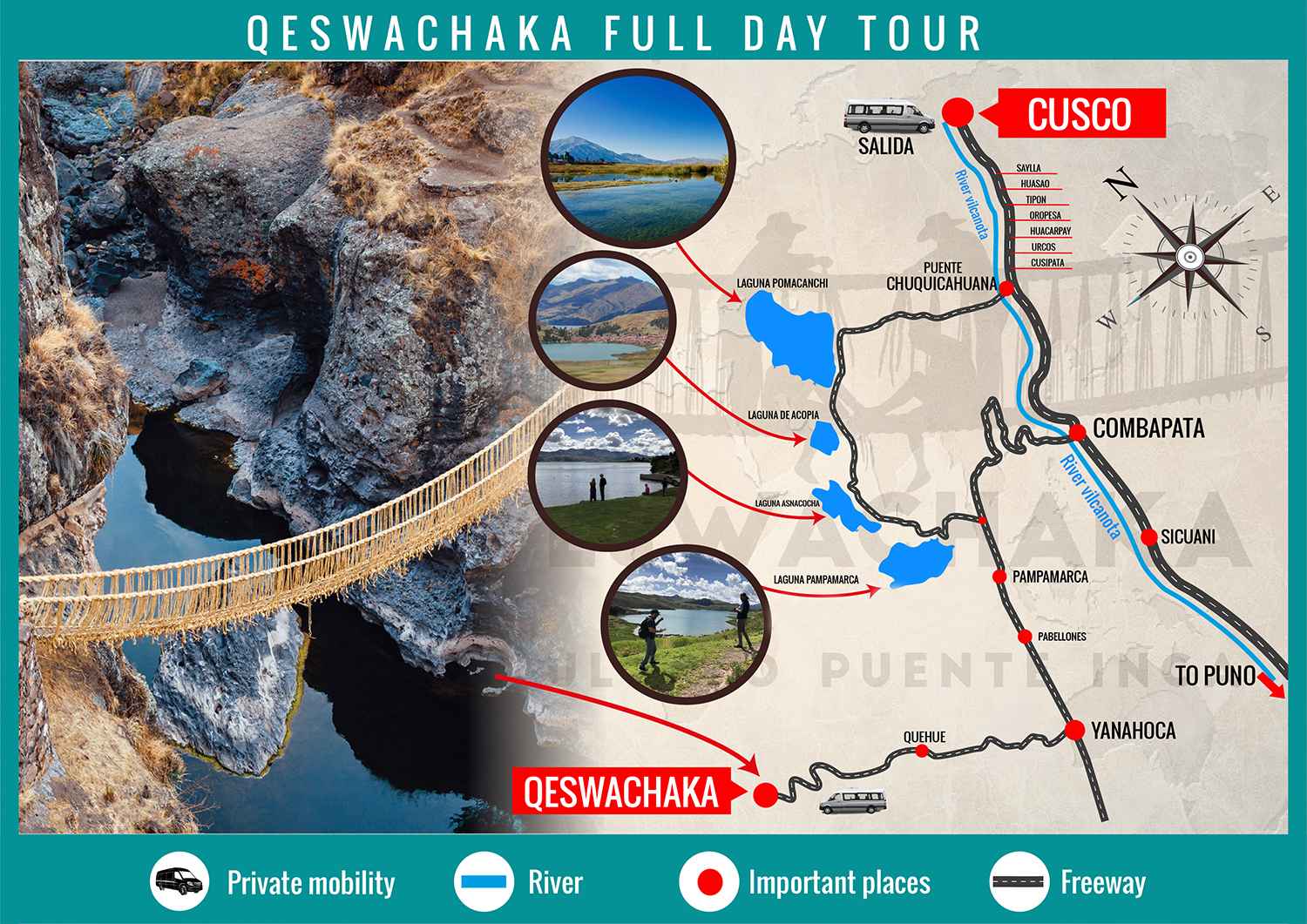In the Apurímac River gorge in the Peruvian region of Cusco, a six-century-old structure is about to be reborn.
Perched 28 meters high, several men weave the final sections of the world’s last remaining Incan rope bridge.
Every June, the Quechua indigenous people engage in an arduous preservation ritual in what was once the heart of the ancient Incan Empire.
Recognized as an Intangible Cultural Heritage of Humanity since 2013, the Q’eswachaka Bridge is a monumental weave of ropes made from q’oya (a plant fiber obtained from a species native to the Andes).

For several weeks, four villages in the province of Canas, in Cusco, prepared materials to recreate the 29-meter-long and 1.2-meter-wide pathway that once served their ancestors and is now mainly used for tourism.
“The entire community,” consisting of more than a thousand individuals, contributed to the construction of this bridge, says Gregorio Huayhua, a 49-year-old member of the Huinchiri community.
Post-pandemic, the indigenous people strive to regain visitors’ interest in one of Cusco’s most striking traditions, a region best known for the citadel of Machu Picchu.
Using sickles, women in colorful skirts cut the q’oya and gather bundles dipped in a pit and crushed with stones.
“The gods would punish us if we did not renew [the bridge]. Something would happen to us. We can never forget the bridge,” says Emperatriz Arizapana, a 54-year-old peasant from the Huinchiri community.
Seated by a dusty roadside, the women begin to weave the ropes. In just a few hours, they create thick q’oya ropes, which men carry on their shoulders through paths and stairs to where the old Q’eswachaka bridge is on the verge of collapse.
“We have carried this [tradition] from generation to generation since pre-Incan times,” says Alex Huilca, a 30-year-old civil engineer who guides the weaving groups.

In addition to the rope bridge, the communities use a metal bridge for trade and transport.
Under the intense sun of the Peruvian Andes, a shaman from one of the communities sacrifices a lamb as an offering to the gods of the earth and mountains.
This is done “so that no accidents occur during the reconstruction,” explains Shaman Cayetano Ccanahuari.
The men dismantle the old structure. They had previously strung the thickest ropes from one end to the other, which will serve as the base for the new bridge.
The bridge structure is based on two ropes that will later be used as handrails.
With information from AFP

